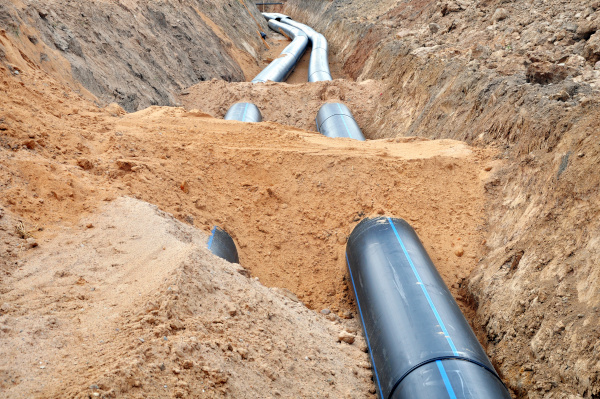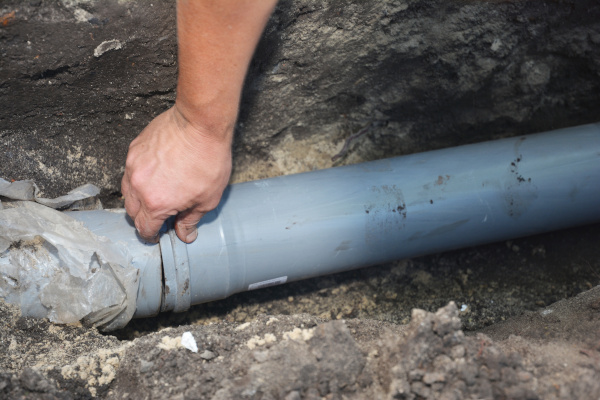Why Is Lateral CIPP Lining Getting Popular?
There'll come a time when the lateral sewer drain extending from a house connected to the main sewer line would deteriorate, causing holes, cracks, fractures, water infiltration, and offset or open joints. Major culprits include tree root infiltration that forms root balls and blocks the sewer, causing backups, damages, and unpleasant odors. When lateral sewers become clogged and damaged, they'd need pipe rehabilitation.
The most sought pipe rehabilitation method nowadays is lateral CIPP lining. But, what is lateral CIPP lining, and why is it getting popular? Read below to increase your knowledge about this trenchless pipe rehabilitation process.
What Is Lateral CIPP Lining?

Lateral CIPP lining refers to the use of cured-in-place-pipe liners for trenchless rehabilitation of damaged pipes. Trenchless technology utilizes new techniques to replace or install underground sewer pipes without extensive excavation to the ground above.
Extremely Durable And Excellent Longevity
Lateral CIPP liners consist of good materials, extending the lifespan of gravity sewer lines. CIPP liners come with a protective layer, relining lateral and vertical pipes to prevent and treat pipe leakage and shock. With CIPP lining, you have peace of mind that your pipes will last for many years, preventing water damage caused by a plumbing failure.
During the CIPP liner manufacturing process, liners are stress-tested. Also, manufacturers evaluate the thickness, density, evenness, weld ability, and strength of CIPP liners to ensure they're of good quality. As such, compare CIPP lining products as to how they're being manufactured and tested.
Check the following qualities of lateral CIPP lining:
- Leakage-resistant
- Repels water from passing
- No maintenance required
- Moisture-resistant
Fast And Time-Saving, No-Dig Technology
Traditional sewer repair involving digging takes days or weeks. On the other hand, it only takes a few hours to repair damaged pipes with lateral CIPP lining because it doesn't involve excavation. But, how does trenchless pipe lining works? Here's how:
-
Preparation Phase: The damaged pipeline is removed from the water service, and a tanking or diversion feature is installed temporarily. The next step is a thorough cleaning of the pipe to remove debris and corrosion using manual cleaning and high-pressure jets. Defective parts are removed as well.
-
Lining Phase: The lining process uses CIPP lining saturated with resin, pulled in or winched and set in place. Next, the CIPP liner is inflated using water under high-pressure or compressed air. After which, the liner is cured with steam, hot water, and ultraviolet light.
-
Post-Curing Phase: This phase comes after cooling and hardening of the CIPP liner. The end cuts are removed, which leaves the pipe end flush and prepared for sealing. The final steps include inspection and testing of the new pipe to meet the pre-determined specifications.
Improved Sewer System Functions
CIPP lining can be used to repair any pipe material, including clay, PVC, corrugated metal, cast iron, steel, and concrete pipes. Because of the durability and smoothness of the outcomes, CIPP lining improves your sewer system's overall flow, resisting waste buildup and clog formation.
When choosing CIPP lining, it's crucial to source CIPP liners from reputable suppliers and contractors. Check their products and services on their website and read testimonials or reviews to determine if your prospective company is a good one. This way, you'll have peace of mind that the final result will be excellent.

Environment-Friendly
With traditional sewer pipe repair, heavy machinery is used to excavate and uncover underground pipes. Lateral CIPP lining is a versatile and eco-friendly solution to repair sewer pipes underneath trees, driveways, and basements, without disturbing the landscape above ground.
Cost-Effective
Just imagine the impact of excavation to repair sewer pipe in your business. You might decide to temporarily close your business during the repair. Also, homeowners experience so much hassle, such as leaving work to supervise workers, which means lost earning hours. This is why many people don't go through the traditional expensive sewer repair method.
Business owners and homeowners can save more money on sewer pipe repairs. That's why this trenchless lining technique is getting popular. A study shows that the mean construction costs of sewer CIPP renewal are 63% (medium diameter size pipe), 57% (small), and 18% (large) less than the open-cut pipeline replacement.
Conclusion
Lateral CIPP lining is getting popular for many good reasons. Also, it doesn't require extensive excavation or digging, saving time and money. This trenchless sewer pipe lining improves sewer system function because of its extreme durability and excellent longevity. CIPP lining is also a more environment-friendly solution than traditional excavation pipe repair. Given the benefits of lateral CIPP lining, it's no wonder why more and more people opt for the sewer pipe rehabilitation method.